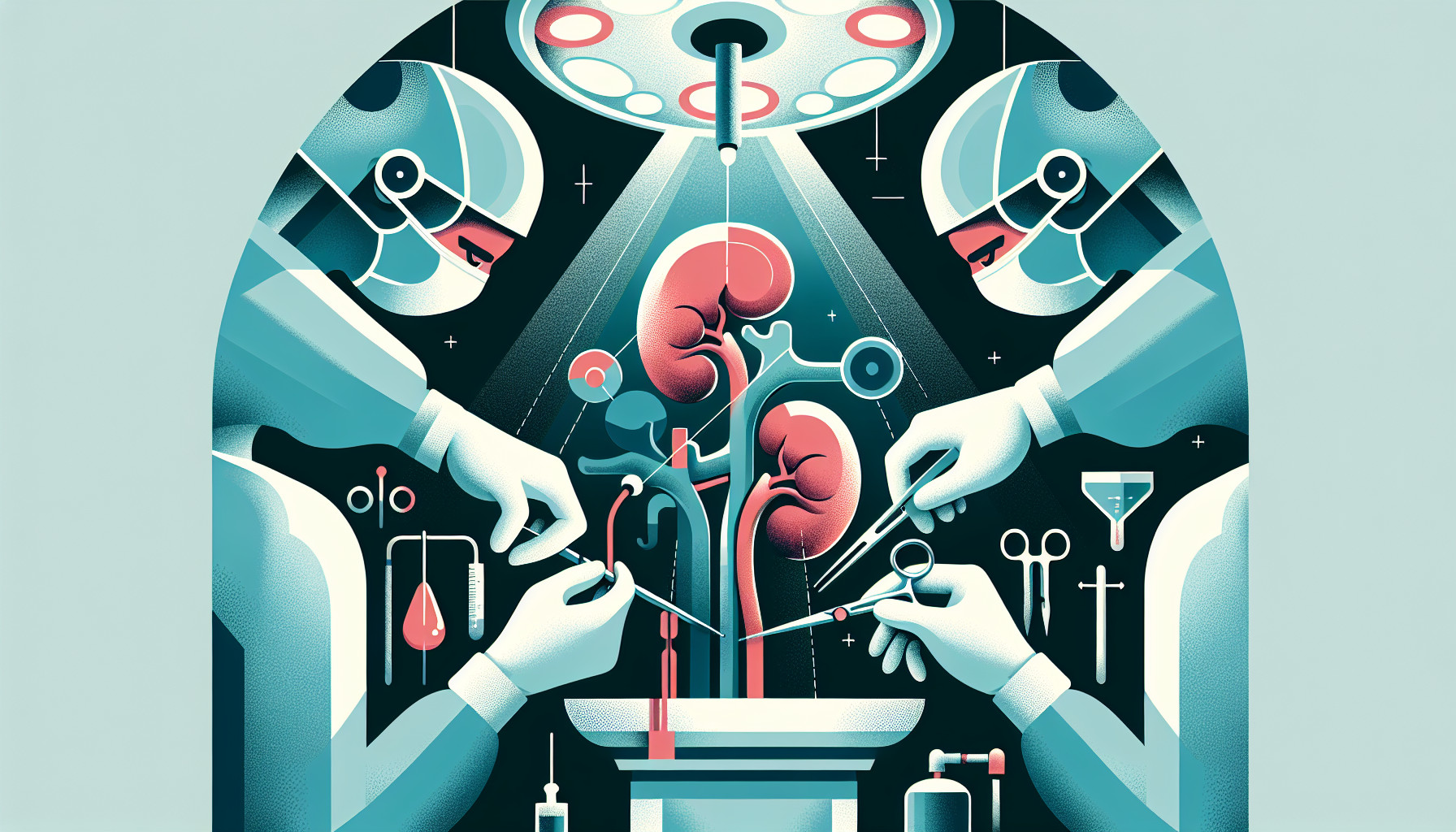Our Summary
This research paper is about a study conducted to identify the risk factors that might cause a type of kidney surgery, called laparoscopic nephrectomy (LN), to be changed to traditional open surgery. This operation is done to remove kidney stones (urolithiasis). The researchers looked at patient data from 2006 to 2013, and took into account factors like patient age, health status, kidney function, and results from pre-surgery CT scans.
Out of 84 patients who had the LN procedure, 16 (or 19%) had to be switched to open surgery because the kidney was stuck to nearby organs. Other reasons for switching included excessive bleeding and damage to the large intestine. The study found that having a kidney infection (pararenal abscess) and the kidney being stuck to the intestine (bowel adhesions) were significant risk factors for needing to switch to open surgery.
So, the study concludes that if a pre-surgery CT scan shows a kidney infection or the kidney stuck to the intestine, there’s a higher chance that the surgeon might need to switch from laparoscopic to open surgery.
FAQs
- What is the purpose of the study conducted in this research paper?
- What were the significant risk factors identified for needing to switch from laparoscopic nephrectomy to open surgery?
- How can a pre-surgery CT scan help in determining the type of surgery required for kidney stones?
Doctor’s Tip
A helpful tip that a doctor might tell a patient about laparoscopic nephrectomy is to follow all pre-surgery instructions carefully, including any recommendations for imaging tests like CT scans. By identifying potential risk factors before the surgery, the doctor can better prepare for the procedure and potentially prevent the need to switch to open surgery. Additionally, maintaining good kidney health and overall health through proper hydration, diet, and exercise can also help reduce the risk of complications during surgery.
Suitable For
Overall, patients who are typically recommended for laparoscopic nephrectomy are those who do not have significant risk factors such as kidney infections or bowel adhesions. Additionally, patients who are younger, in good overall health, and have good kidney function are more likely to be recommended for laparoscopic nephrectomy. However, it is important for surgeons to assess each patient individually and consider all potential risk factors before recommending a specific surgical approach.
Timeline
Before the laparoscopic nephrectomy procedure, the patient would have undergone a series of tests and evaluations to determine the need for surgery and to assess their overall health status. This would include imaging tests such as CT scans to evaluate the kidney stones and identify any potential risk factors that may complicate the surgery.
During the laparoscopic nephrectomy procedure, the surgeon would make small incisions in the abdomen and use a camera and specialized instruments to remove the kidney stones. The laparoscopic approach is minimally invasive and typically results in less pain, shorter recovery time, and lower risk of complications compared to traditional open surgery.
If during the laparoscopic nephrectomy procedure, the surgeon encounters complications such as the kidney being stuck to nearby organs, excessive bleeding, or damage to the intestine, the surgery may be switched to traditional open surgery. This would involve a larger incision and longer recovery time for the patient.
After the laparoscopic nephrectomy procedure, the patient would typically have a shorter hospital stay and faster recovery compared to traditional open surgery. They would be monitored for complications such as infection, bleeding, or damage to surrounding organs, and would follow up with their healthcare provider for post-operative care and monitoring.
What to Ask Your Doctor
Some questions a patient should ask their doctor about laparoscopic nephrectomy include:
- What are the benefits of laparoscopic nephrectomy compared to traditional open surgery?
- What are the potential risks and complications associated with laparoscopic nephrectomy?
- How will you determine if I am a suitable candidate for laparoscopic nephrectomy?
- What factors might increase the likelihood of needing to switch to open surgery during the procedure?
- How will you ensure that any potential risk factors, such as kidney infection or bowel adhesions, are identified and managed before the surgery?
- What is the recovery process like after laparoscopic nephrectomy compared to open surgery?
- How will my kidney function be monitored after the surgery?
- Are there any specific lifestyle changes or precautions I should take after the surgery to prevent complications?
- What is the success rate of laparoscopic nephrectomy for treating kidney stones?
- Are there any alternative treatment options that I should consider before proceeding with laparoscopic nephrectomy?
Reference
Authors: Danilovic A, Ferreira TAC, Vicentini FC, Torricelli FCM, Marchini GS, Mazzucchi E, Nahas WC, Srougi M. Journal: Rev Col Bras Cir. 2019 Jun 19;46(3):e20192092. doi: 10.1590/0100-6991e-20192092. PMID: 31241685
